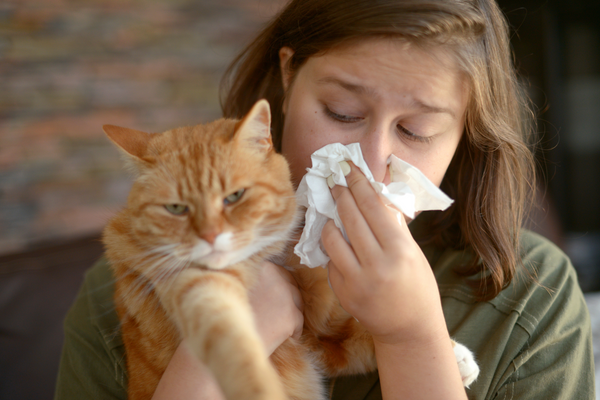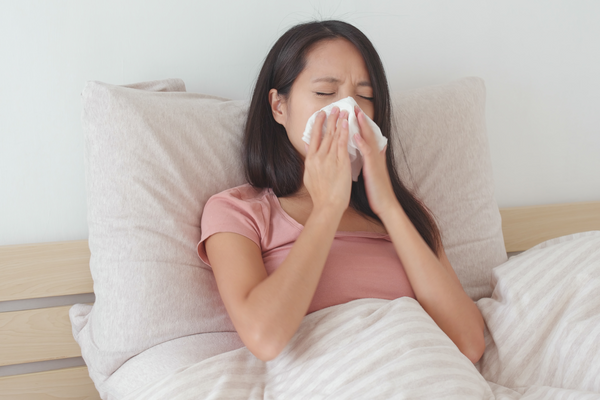Cleaning, Sanitizing, and Disinfecting: Know the Difference

We’re in the midst of the global COVID-19 pandemic and it’s important to continue to take precautions to prevent illness, such as vigilant hand washing, social distancing, and regularly cleaning and disinfecting commonly touched surfaces to help keep germs at bay. However, due to clever marketing tactics and media hype, many consumers do not fully understand the importance of disinfecting or how disinfectants really work, so they end up spending money on the wrong kinds of products and lots of time cleaning, without gaining any extra protection from germs. Although the terms cleaning, sanitizing, and disinfecting are often (incorrectly) used synonymously, there are significant differences between the three.
Since the arrival of the novel coronavirus SARS-CoV-2, even the bravest of us have been feeling uneasy about touching things like doorknobs, shopping cart handles, light switches, faucets, shared electronics, toys, or anything else that someone else's hands may have touched. And rightly so! As many moms love to remind their children: You don’t know where those hands have been. There is still much to learn about SARS-CoV-2 and COVID-19, the disease the virus causes. Based on what is currently known, the virus is highly contagious. The spread from person-to-person most frequently happens among close contact, within about six feet. When someone who is infected coughs or sneezes, they send respiratory droplets containing the virus into the air. A healthy person can then breathe in those droplets and become infected. Virus-carrying respiratory droplets can also land on objects and surfaces. It’s possible for someone to then catch the virus by touching a contaminated surface or object then touching their eyes, nose, or mouth. How long does SARS-CoV-2 survive on surfaces? A study by the World Health Organization (WHO) suggests that human coronaviruses like SARS-CoV-2 may remain viable from hours to days on surfaces made from a variety of materials. Another recent preliminary scientific study, published on the health sciences preprint server medRxiv in May 2020, shows that SARS-CoV-2 remains viable for up to 7 days on smooth surfaces.
SARS-CoV-2 has spread rapidly and destructively worldwide. As of July 21, there are over 14.7 million confirmed cases (3.8 million cases in the U.S.) and 611,000 deaths (141,000 deaths in the U.S.) caused by this devastating illness.
To help keep yourself and your loved ones safe from COVID-19, as well as other illnesses like the common cold and the flu, it’s important to know the difference between cleaning, sanitizing, and disinfecting – and to use the best methods to eradicate germs.
So, what exactly is the difference between these terms?
Cleaning: The Process of Removing Germs

Cleaning involves removing dirt, grime, and germs from objects and surfaces and leaves things looking shiny and clean. Soap (or detergent) and water might be used in this process. However, general cleaners – such as soap and water, vinegar, conventional all-purpose cleaners, or essential oils – are not designed to eliminate pathogens that can cause an illness.
Cleaning is the first step to a complete process of preventing illness.Sanitizing: The Process of Reducing Germs

You might think that sanitizing a surface would completely eradicate viruses and bacteria, but it falls short. While sanitation is a step beyond cleaning, sanitizers reduce – but do not eliminate – specific bacteria and viruses. Instead, sanitizers reduce microorganisms on a surface to a level considered safe by public health standards.
Disinfecting: The Process of Killing Germs

To disinfect a surface means to completely eliminate pathogens and disease-causing microorganisms. The key difference between sanitizing and disinfecting is that sanitizers reduce microorganisms on a surface to a level considered safe by public health standards. A disinfectant, such as Vital Oxide, on the other hand, kills nearly 100% of bacteria, viruses, and fungi on a surface. The standard is lower for sanitizers, which must reduce microorganisms on a surface by 99.9% within 30 seconds. To qualify as a disinfectant, the Environmental Protection Agency (EPA) requires that the solution reduces the levels of pathogens by 99.999% in five to ten minutes.
To properly disinfect an object or surface, you must first clean it to remove dirt, grime, and debris, before you begin disinfecting. Vital Oxide may be used for this pre-cleaning step. Then, follow the directions on the bottle, and apply the solution to the pre-cleaned surface to have true disinfection. To use Vital Oxide against SARS-CoV-2, follow the directions on the label for use against Norovirus Feline Calicivirus** and Canine Parvovirus (Strain Cornell-780916, ATCC VR-2016**) on hard, non-porous surfaces. For best health and safety practices, areas that should be frequently cleaned and disinfected are those commonly touched, such as doorknobs, light switches, handles, faucets, cell phones, tablets, remote controls, counter tops, sinks, car steering wheels, etc.
To clean and properly disinfect clothes, towels, and bedding, wash in hot water with your regular laundry detergent, such as our plant-based Anti-Allergen Detergent; and add Vital Oxide (½ cup to 1 cup depending on the size of the load) to the wash cycle. Unlike bleach, Vital Oxide will not discolor fabric or leave behind any odor. In between washing loads, it’s a good idea to disinfect your washing machine with Vital Oxide by spraying it directly into the interior of the washer and allowing it to dry.Final Thoughts
At The Ecology Works, the well-being of people and the planet is at the forefront of all that we do. As such, given the current situation in the world, we wanted to be absolutely clear about how our products work to keep you safe. Our premier disinfectant product, Vital Oxide, has been approved by the EPA for use against SARS-CoV-2, the novel coronavirus that causes the disease COVID-19. Our hero ingredient, chlorine dioxide, is the heavy lifter that eradicates 99.9% of viruses and bacteria, without any harsh odors, fumes, or dangerous residues. With Vital Oxide, you no longer need to use bleach and other harmful conventional household products that increase volatile organic compounds (VOCs) in your environment. Instead, you can have peace of mind knowing that you’re using a disinfectant that is safe and gentle to use around your whole family, including children and pets, while still effectively eliminating pathogens. Vital Oxide is perfect to use at home, work, school, and even on the go. It’s powerful, responsible, and safe for all – except for germs, that is!
From all of us here at The Ecology Works, we hope that you all stay safe and healthy through this trying time. If you have any questions about cleaning, sanitizing, disinfecting, or anything else, please feel free to Contact Us or message us on Facebook.




